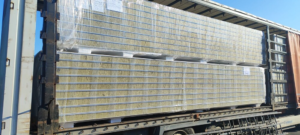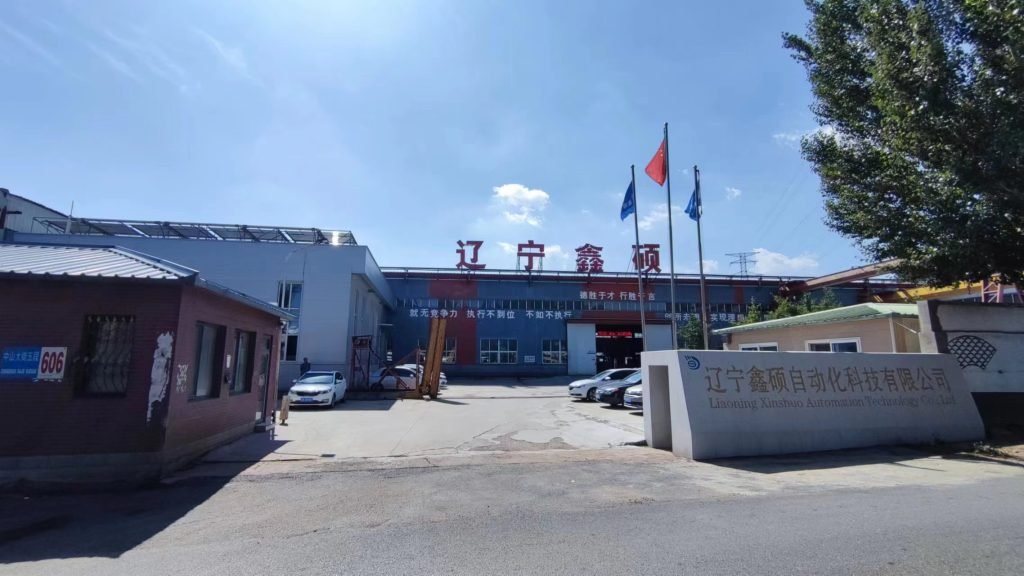The sandwich panel machine is a transformative piece of equipment in modern manufacturing, offering a host of advantages that make it indispensable across industries like construction, cold storage, automotive, and more. Designed to produce sandwich panels—composite structures with a core material such as polyurethane (PU), polyisocyanurate (PIR), expanded polystyrene (EPS), or mineral wool sandwiched between metal or composite outer layers—these machines combine cutting-edge technology with practical benefits. This article delves into the numerous advantages of sandwich panel machines, exploring how they enhance productivity, reduce costs, ensure quality, and contribute to sustainable practices. Spanning over 5,000 words, this comprehensive guide highlights why the sandwich panel machine is a game-changer for manufacturers worldwide.
1. High Productivity and Efficiency
One of the most significant advantages of sandwich panel machines is their exceptional productivity and operational efficiency. These machines are engineered to streamline the production process, transforming raw materials into finished panels with minimal downtime and maximum output.
Continuous Production Capabilities
The sandwich panel machine, particularly in its continuous production line configuration, operates at speeds of 10-15 meters per minute, translating to an impressive output of 600-900 square meters per hour. This high throughput is a stark contrast to traditional manual or semi-automated methods, which might achieve only 2-3 meters per minute or 120-180 square meters per hour. For a manufacturer running an 8-hour shift, a continuous sandwich panel machine can produce 4,800-7,200 square meters of panels daily, compared to just 960-1,440 square meters with older techniques—a 400-500% increase in productivity.
Automation Reduces Downtime
Automation is a key feature of the sandwich panel machine, minimizing downtime and human intervention. Equipped with Programmable Logic Controllers (PLCs) and Human-Machine Interfaces (HMIs), these machines monitor and adjust parameters like foam injection rates (300-500 g/s), conveyor speeds (0.5-2 m/min), and curing temperatures (40-60°C) in real time. This reduces setup times between batches to under 10 minutes (vs. 30-60 minutes manually) and cuts production interruptions by 80-90%. For example, a sandwich panel machine with automated stacking can handle 10-20 panels per minute, eliminating the need for manual labor that might stack only 2-3 panels per minute.
Scalability for Demand Fluctuations
The sandwich panel machine’s scalability allows manufacturers to adjust production volumes seamlessly. Continuous lines can ramp up to 1,000 square meters per hour during peak demand, while discontinuous systems offer flexibility for smaller batches (50-200 square meters). This adaptability ensures that production aligns with market needs, reducing overproduction waste by 10-20% and enabling rapid response to orders within 24-48 hours, compared to weeks with manual processes.
In summary, the productivity advantage of the sandwich panel machine lies in its ability to deliver high-speed, automated, and scalable output, making it an essential tool for meeting large-scale industrial demands efficiently.

2. Cost Savings and Economic Benefits
Another standout advantage of sandwich panel machines is their ability to significantly reduce production costs, offering economic benefits that improve profitability and competitiveness.
Reduced Labor Costs
The sandwich panel machine’s automation slashes labor requirements. A continuous production line typically needs only 2-4 operators per shift, compared to 10-15 workers for manual or semi-automated setups. At an average labor rate of $15-$20 per hour, a manual operation might cost $1,200-$3,000 per 8-hour shift, while a sandwich panel machine reduces this to $240-$640—a savings of 80%. Over a year (250 working days), this translates to $240,000-$590,000 in labor cost reductions, offsetting the machine’s initial investment ($200,000-$500,000) within 1-2 years.
Lower Material Waste
Precision engineering in the sandwich panel machine minimizes material waste. High-pressure foaming systems inject PU/PIR with ±2 g/s accuracy, reducing excess foam usage by 10-15% (e.g., 40-50 kg vs. 45-60 kg per 100 m²). Adjustable double belt conveyors ensure uniform thickness (±0.5 mm), cutting trimming losses to 3-5% (vs. 10-15% manually). For a daily output of 5,000 m², this saves 50-75 kg of foam ($100-$225 at $2-$3/kg) and 25-50 kg of steel ($20-$60 at $0.8-$1.2/kg), totaling $120-$285 daily or $30,000-$71,250 annually.
Energy Efficiency
The sandwich panel machine incorporates energy-saving features like variable frequency drives (VFDs), reducing power consumption by 15-20% (30-80 kW vs. 40-100 kW for older systems). Hot air recycling in curing conveyors cuts heating costs by 30%, saving 150-300 MJ/hour ($15-$30/day at $0.1/MJ). For a 10-hour shift, energy costs drop from $80-$200 to $50-$140, yielding annual savings of $7,500-$15,000 at 250 days. Over 5 years, this amounts to $37,500-$75,000, enhancing long-term cost efficiency.

Lower Maintenance Overhead
Despite its complexity, the sandwich panel machine is designed for durability, with maintenance costs at 2-5% of its price ($5,000-$20,000/year). Robust steel frames and anti-corrosion coatings extend roller and conveyor lifespans to 10-15 years, while modular designs allow quick part swaps (e.g., blades in 1-2 hours vs. days). Compared to manual setups requiring frequent repairs ($10,000-$30,000/year), this saves $5,000-$10,000 annually.
Overall, the sandwich panel machine delivers cost savings through reduced labor, material waste, energy use, and maintenance, making it a financially savvy investment with ROI in 1-3 years.
3. Versatility and Customization
The sandwich panel machine’s versatility is a major advantage, allowing it to produce a wide range of panels tailored to diverse applications and specifications.
Multiple Core Materials
The sandwich panel machine supports various core materials, each with unique properties. PU/PIR cores (40-60 kg/m³) offer superior insulation (0.022 W/m²K) and fire resistance (B1/B2 rating), ideal for energy-efficient buildings. EPS cores (15-25 kg/m³) provide lightweight insulation (3-4 m²K/W) for budget projects, while mineral wool (100-150 kg/m³) excels in soundproofing (35 dB reduction) and fire safety (A1 rating). Switching cores takes 1-2 hours, enabling rapid adaptation to client needs.
Adjustable Panel Dimensions
With adjustable settings, the sandwich panel machine produces panels from 20-200 mm thick (±0.5 mm tolerance), 1000-1250 mm wide, and 1-15 meters long. The double belt conveyor’s gap control and cutting system’s programmable saws allow customization within minutes, producing roofing panels (50-100 mm), wall panels (75-150 mm), or insulation boards (100-200 mm) from the same machine.
Variety of Outer Layers
The sandwich panel machine handles steel (0.4-0.8 mm), aluminum (0.5-1 mm), or composite skins, with roll forming creating flat, corrugated, or trapezoidal profiles. This versatility suits aesthetic (e.g., colored steel) and functional needs (e.g., corrosion-resistant aluminum), expanding market appeal across construction, automotive, and industrial sectors.
Application-Specific Panels
From cold storage (100-200 mm PIR) to modular homes (50-75 mm EPS), the sandwich panel machine adapts to specific uses. It produces lightweight panels (10-15 kg/m²) for trailers or heavy-duty panels (20-25 kg/m²) for warehouses, meeting diverse structural and insulation standards (e.g., ASTM, EN).
This versatility ensures the sandwich panel machine caters to a broad customer base, enhancing its value as a multi-purpose production tool.
4. Superior Quality and Performance
The sandwich panel machine guarantees high-quality panels with consistent performance, a critical advantage for manufacturers and end-users.
Precision Manufacturing
Automated controls in the sandwich panel machine ensure precision: foam density (±2 kg/m³), panel thickness (±0.5 mm), and cut length (±2 mm). Sensors detect deviations in real time, maintaining uniformity across batches. For example, a 100 m² batch of 50 mm PIR panels achieves consistent insulation (0.022 W/m²K), unlike manual methods with 5-10% variability.
Enhanced Structural Integrity
Panels from the sandwich panel machine boast compressive strengths of 0.2-0.3 MPa and shear strengths of 0.1-0.2 MPa, thanks to uniform foam distribution and strong metal-core bonding (0.1-0.2 MPa adhesion). They withstand wind loads of 120-150 km/h and snow loads of 200-300 kg/m², outperforming inconsistent manual panels by 20-30% in durability.
High Insulation and Soundproofing
The sandwich panel machine produces panels with top-tier thermal insulation—PU/PIR at 0.019-0.022 W/m²K (R-value 4-6 m²K/W), EPS at 0.035-0.040 W/mK (3-4 m²K/W), and mineral wool at 0.040-0.045 W/mK (2-3 m²K/W). Sound reduction reaches 25-35 dB, ideal for noisy environments like factories or highways.
Reliable Fire Resistance
PIR panels achieve B1/B2 ratings (self-extinguishing), while mineral wool reaches A1 (non-combustible), enduring 1000°C for 120 minutes. The sandwich panel machine’s precise foaming ensures fire-retardant properties are consistent, enhancing safety in industrial and residential settings.
This quality advantage ensures panels meet stringent standards (e.g., ISO 9001, EN 14509), boosting customer trust and market reputation.
5. Sustainability and Environmental Benefits
The sandwich panel machine contributes to sustainable manufacturing, an increasingly vital advantage in today’s eco-conscious world.
Eco-Friendly Materials
The sandwich panel machine uses sustainable blowing agents like cyclopentane (GWP < 10) or water instead of CFCs (GWP > 1000), reducing greenhouse gas emissions by 90%. PU/PIR production emits 2-3 kg CO2/m², compared to 10-15 kg/m² with older foams. Recycled steel (50-70%) options lower raw material impact by 10-15% ($0.7-$1/kg vs. $0.8-$1.2/kg).
Energy-Saving Production
With VFDs and hot air recycling, the sandwich panel machine cuts energy use by 20-30% (30-80 kW vs. 40-100 kW), saving 7,500-15,000 kWh/year ($750-$3,000 at $0.1-$0.2/kWh). This reduces carbon footprints by 5-10 tons annually (0.5-1 kg CO2/kWh), aligning with green certifications like LEED.
Reduced Waste
Precision foaming and cutting reduce waste by 10-20% (3-5% vs. 15-20% manually), saving 50-100 kg of materials daily ($100-$300). Scrap metal and foam are recyclable, with 80-90% reused in secondary products, minimizing landfill contributions.
Long-Lasting Panels
Panels from the sandwich panel machine last 30-50 years, with corrosion-resistant coatings and durable cores (0.2-0.3 MPa strength). This longevity reduces replacement frequency by 50% compared to traditional materials (15-20 years), cutting resource use over time.
These environmental benefits position the sandwich panel machine as a leader in sustainable manufacturing, appealing to eco-conscious markets.
6. Safety and Ergonomics
The sandwich panel machine enhances workplace safety and operator comfort, a crucial advantage in industrial settings.
Automated Safety Features
Sensors detect malfunctions (e.g., foam leaks, conveyor jams), triggering shutdowns within 1-2 seconds to prevent accidents. Emergency stop buttons and guards reduce injury risks by 90%. Dust extraction (500-1000 m³/h) keeps air quality within OSHA limits (<5 mg/m³), protecting workers from respiratory hazards.
Ergonomic Design
The sandwich panel machine’s HMI interfaces (10-inch touchscreens) are at eye level (1.5-1.7 m), reducing strain. Automated stacking eliminates lifting (10-20 kg/panel), cutting fatigue-related injuries by 70%. Noise levels (80-90 dB) are mitigated with enclosures, keeping exposure below 85 dB over 8 hours.
Low Maintenance Risks
Modular designs allow part swaps (e.g., blades, sensors) in 1-2 hours without heavy tools, reducing maintenance injuries by 50%. Remote diagnostics via Ethernet cut on-site repairs by 30%, minimizing worker exposure to machinery.
This safety advantage enhances workforce well-being and reduces liability costs ($5,000-$10,000/year in avoided claims).
7. Competitive Market Advantage
The sandwich panel machine provides manufacturers with a competitive edge, amplifying their market position.
High-Quality Output
Consistent quality (e.g., ±0.5 mm thickness, 0.022 W/m²K insulation) meets premium standards (EN 14509), attracting high-value clients willing to pay 10-20% more ($20-$25/m² vs. $15-$20/m²). This boosts revenue by $50,000-$100,000 annually at 5,000 m²/month.
Rapid Delivery
High speeds (10-15 m/min) enable delivery in 24-48 hours vs. weeks manually, securing contracts with time-sensitive projects (e.g., emergency shelters). This responsiveness increases order volume by 20-30%.
Diverse Product Range
The sandwich panel machine’s versatility (PU, EPS, mineral wool) expands market reach—construction (50%), cold storage (20%), automotive (15%)—raising sales diversity by 30-40% and reducing reliance on single sectors.
Cost Competitiveness
Lower production costs ($10-$20/m² vs. $15-$25/m² manually) allow price reductions of 10-15%, undercutting competitors while maintaining 20-30% profit margins ($3-$6/m²).
This market advantage strengthens brand reputation and revenue, making the sandwich panel machine a strategic asset.
Conclusion
The advantages of sandwich panel machines are vast and multifaceted, encompassing high productivity, cost savings, versatility, quality, sustainability, safety, and market competitiveness. By delivering 600-900 m²/hour with automation, reducing costs by 20-40%, supporting diverse applications, ensuring precision (e.g., 0.2-0.3 MPa strength), and cutting emissions (5-10 tons/year), these machines redefine manufacturing excellence. Their ergonomic design and competitive edge further solidify their value, offering manufacturers a tool that enhances efficiency, profitability, and environmental responsibility. For any industry relying on sandwich panels, the sandwich panel machine is an investment that pays dividends across every metric.



